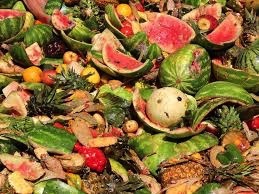From Farm to Trash Can
November 30, 2018

Though 805 million people go to bed hungry each day, more than a third of all food produced never reaches the table. Every year about 1.3 billion tons of food wasted, costing around a trillion dollars in losses. The issue of food waste seems straight-forward – instead being thrown away, excess food should go to those who need it. However, it’s not that simple.
If food waste were its own country, it would rank third in greenhouse gas emissions. China, the largest producer of greenhouse gas, accounts for 25.6%, followed by the United States, which produces 13.9% of greenhouse gases. Food waste is responsible for 6.7% of greenhouse gas production.
The United States is responsible for the largest percentage of food waste. One-third of wasted food occurs at the consumer level, where the consumer buys too much and throws it away. Americans tend to buy large amounts of food to fill their refrigerators, as they do not like to see empty shelf space. However, a lot of this food gets thrown away. As the average size of refrigerators has grown by 15% since 1960, so this problem has compounded. Americans now have to buy more food to fill the blank space in their fridges. Though it may look disconcerting, blank space is not necessarily bad and consumers should buy only what they absolutely need on a day-to-day basis.
Two-thirds happens at the production and distribution level. Food rots in fields, poor transportation networks cause the food to spoil or suffer damage en route, or the food will simply outlive its shelf-life in markets. In order to limit this type of waste, production and transportation systems should be modernized and streamlined, and excess food in grocery stores should be donated to food pantries or soup kitchens.
Not only does food get wasted, but the resources invested in growing the food are wasted too. A tract of land the size of Central America, Mexico, the lower 48 states, and a huge chunk of Canada account for the land necessary to produce all the food that is wasted annually.
How to solve the problem? An change can be effected on the individual level. From buying only what food is absolutely needed, to eating leftovers once or twice a week, to donating uneaten food to pantries or drives, change is within reach.